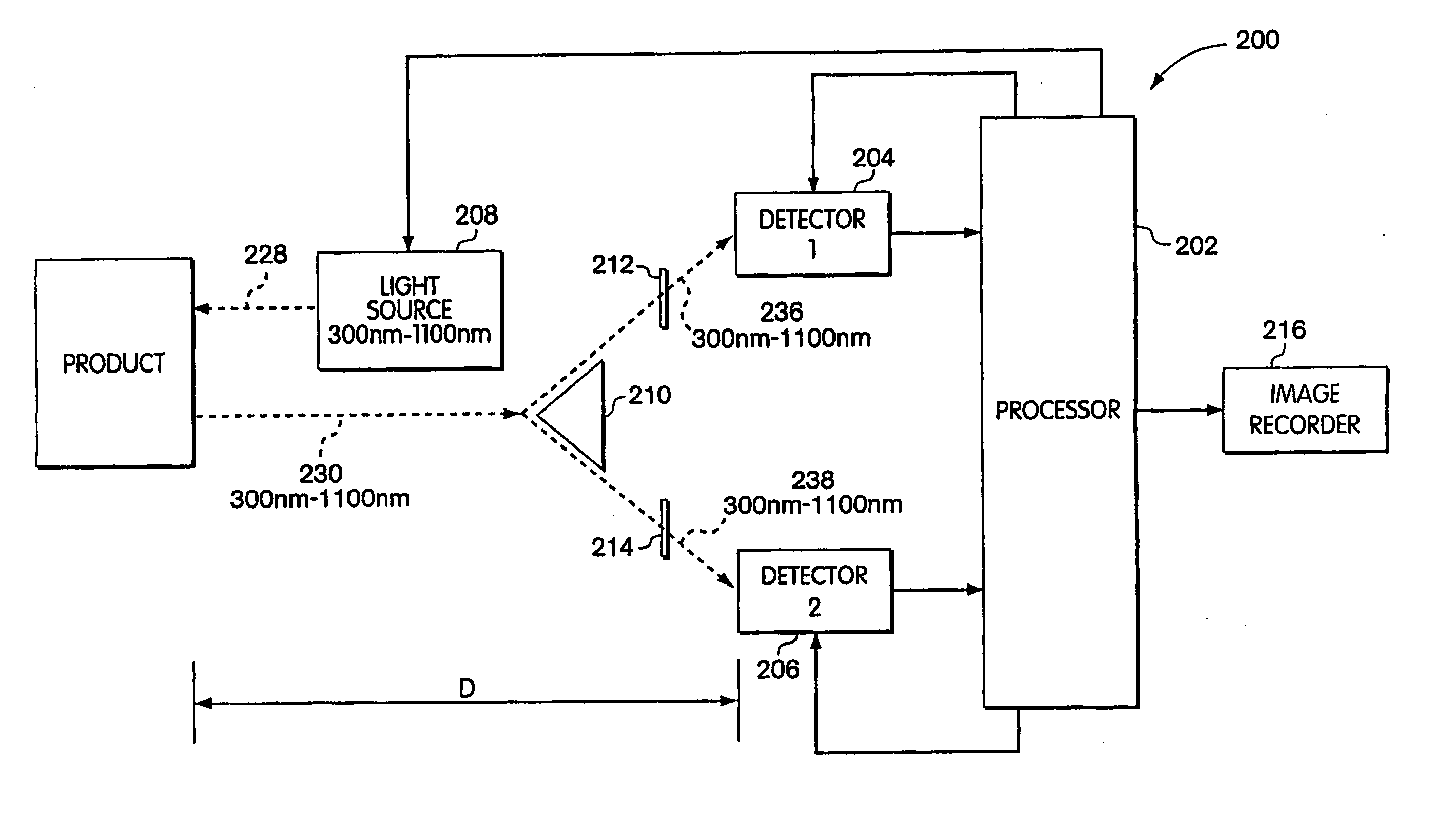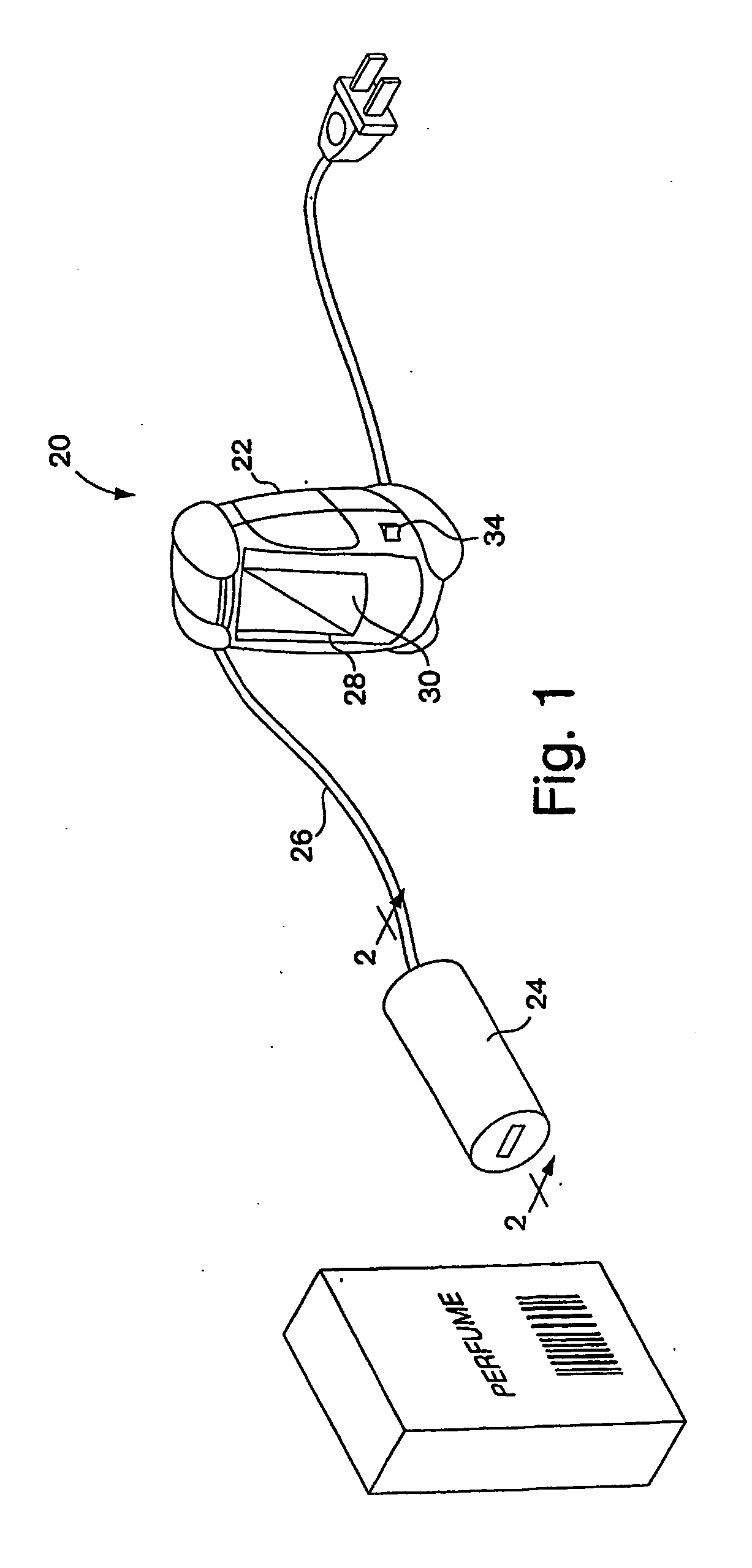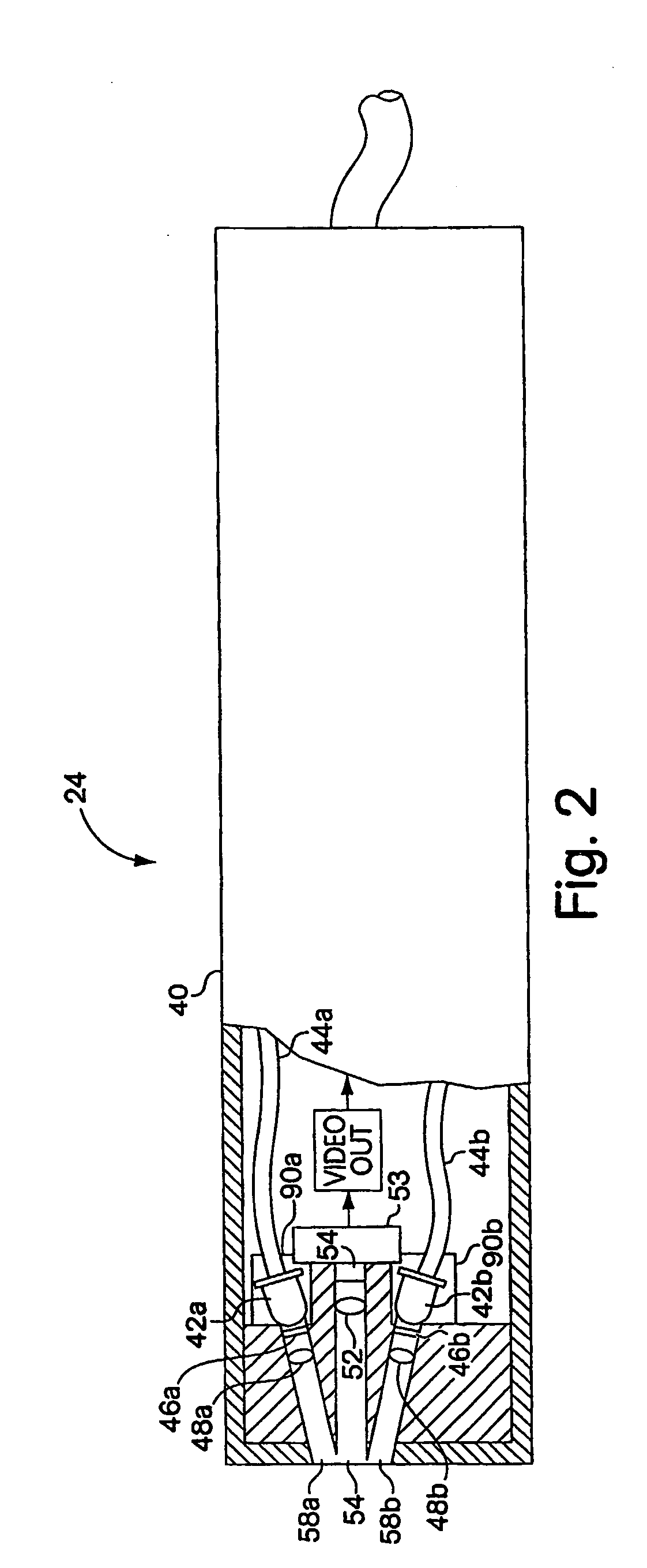Tamper-resistant authentication mark for use in product or product packaging authentication
a technology for authenticating products and product packaging, applied in the field of authentication, can solve the problems of tarnishing the perception of the brand by consumers, affecting the authenticity of products or product packaging, and significant damage to the owner of the brand, and achieve the effect of easy removal from the product packag
- Summary
- Abstract
- Description
- Claims
- Application Information
AI Technical Summary
Benefits of technology
Problems solved by technology
Method used
Image
Examples
example i
[0186] 19 milligrams of a light-emissive compound that emits at 560 nm in response to an excitation wavelength of 488 nm is dissolved in 1 mL of methylethylketone (MEK). A second stock solution is made by dissolving 40 milligrams of a second light-emissive compound that emits at 900 nm in response to excitation at 488 nm into 1 mL of MEK. 3.5 milliliters of stock solution #1 and 2 milliliters of stock solution 2 are then mixed with 650 grams of chemical ink jet (CIJ) ink such as black ink #601 produced by the Willett Corporation of the United Kingdom. This water insoluble ink formulation is then placed in a chemical ink jet printer head. The inkjet printer is placed on a production line and is programmed to print a unique identifying mark on each product or package that passes down the production line. Downstream from the ink jet printer is a verification device that verifies that the proper ink has been applied adequately to the substrate. All products or packages that are verified...
example ii
[0190] With specific reference to FIGS. 18A-18G, the authentication mark in the form of the word “TIRO” was printed on the bottom of a plastic bottle using a continuous ink jet printer, such as that available from Willett, under the Model Number Willett 460SI. The mark is made up of 375M of dye 661 and 375M of dye 240 in a halo-varnish (678). Dye 661 is Aldrich No. 41826-9-aluminum 1,8,15,22-tetrakis(phenylthio)-29H, 31H-phthalocyanine chloride. Dye 240 is Exciton number 08422-HITC iodide. The dyes have an excitation in the 700-750 nm range and an emission in the 760-850 nm range. An image of the mark, as shown in FIG. 18a was taken using the device described with reference to FIGS. 12-17. FIGS. 18a-18g show two marks in the form of the word “TIRO”, with one being brighter than the other. However, it should be appreciated that the invention is not limited in this respect, as only a single mark need be present.
[0191] The bottle was then coated with a thin film of Sun Chemicals UV cu...
PUM
 Login to View More
Login to View More Abstract
Description
Claims
Application Information
 Login to View More
Login to View More - R&D
- Intellectual Property
- Life Sciences
- Materials
- Tech Scout
- Unparalleled Data Quality
- Higher Quality Content
- 60% Fewer Hallucinations
Browse by: Latest US Patents, China's latest patents, Technical Efficacy Thesaurus, Application Domain, Technology Topic, Popular Technical Reports.
© 2025 PatSnap. All rights reserved.Legal|Privacy policy|Modern Slavery Act Transparency Statement|Sitemap|About US| Contact US: help@patsnap.com



